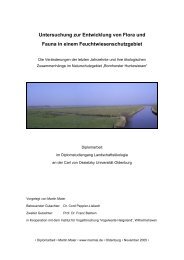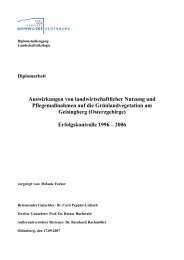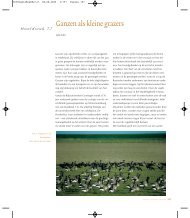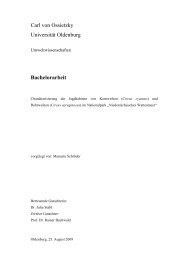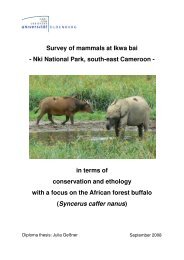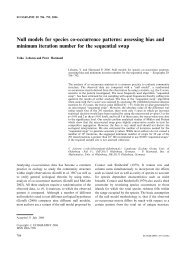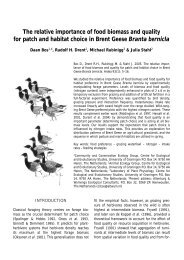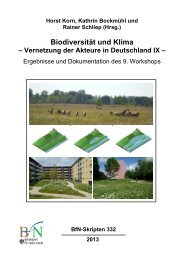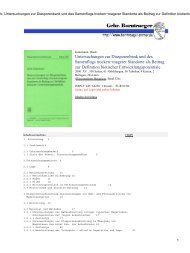Habitat use of barnacle geese at a subarctic salt marsh in the ...
Habitat use of barnacle geese at a subarctic salt marsh in the ...
Habitat use of barnacle geese at a subarctic salt marsh in the ...
You also want an ePaper? Increase the reach of your titles
YUMPU automatically turns print PDFs into web optimized ePapers that Google loves.
656<br />
present, especially <strong>in</strong> <strong>the</strong> Salix reptans/Rhodiola rosea<br />
community.<br />
We divided all non-<strong>salt</strong>-<strong>marsh</strong> plant communities<br />
<strong>in</strong>to <strong>the</strong> follow<strong>in</strong>g habit<strong>at</strong> classes: w<strong>at</strong>er/algae, dune/<br />
sand, bogs and tundra. This sketchy dist<strong>in</strong>ction was<br />
made on <strong>the</strong> basis <strong>of</strong> <strong>in</strong>dic<strong>at</strong>ive species or groups <strong>of</strong><br />
species (Carex aqu<strong>at</strong>ilis, Carex rariflora and mosses for<br />
bog habit<strong>at</strong> class, a substantial cover <strong>of</strong> lichens and<br />
dwarf shrubs for tundra habit<strong>at</strong> class) and substr<strong>at</strong>um.<br />
We subdivided <strong>the</strong> <strong>salt</strong> <strong>marsh</strong> <strong>in</strong>to three habit<strong>at</strong> classes,<br />
based on <strong>the</strong>ir sal<strong>in</strong>ity and loc<strong>at</strong>ion with respect to tidal<br />
<strong>in</strong>und<strong>at</strong>ion (low, middle, high). The communities<br />
belong<strong>in</strong>g to <strong>the</strong> low <strong>salt</strong> <strong>marsh</strong> were <strong>the</strong> most sal<strong>in</strong>e<br />
communities: P. phryganodes/C. subsp<strong>at</strong>hacea, C. subsp<strong>at</strong>hacea/Stellaria<br />
humifusaand <strong>the</strong> beach wall community<br />
<strong>in</strong> <strong>the</strong> colony. Plant communities belong<strong>in</strong>g to<br />
<strong>the</strong> middle high <strong>salt</strong> <strong>marsh</strong> were more brackish communities:<br />
H. tetraphylla, C. mackenziei/Warnstorfia<br />
exannul<strong>at</strong>a, D. psilosantha, C. subsp<strong>at</strong>hacea/dicotyledons,<br />
C. subsp<strong>at</strong>hacea/dicotyledons with P. schrenkii<br />
dom<strong>in</strong>ant and Calamagrostis deschampsioides/Carex<br />
glareosa. The plant communities <strong>of</strong> <strong>the</strong> high <strong>salt</strong><br />
<strong>marsh</strong> were Festuca richardsonii/Parnassia palustrisand<br />
S. reptans/R. rosea.<br />
For all plant communities, <strong>the</strong> total nitrogen content<br />
<strong>of</strong> <strong>the</strong> sediment was very low (




